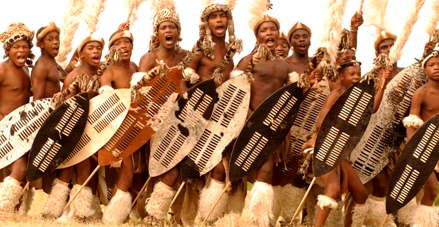World Cultures and their dances are unique in their own right, this is what makes our world beautiful. A world of color like an assorted flower garden. This is how God created us and we are able to appreciate the diversity. At CCE, we remember the saying -: For God so loved the world that He gave His only begotten Son. A Prince of peace that came preaching love and righteousness. We may perhaps not agree according to our religions, but we agree on this, that no man wants to be hated, or discriminated against. For that reason we can come to an agreement that it is better to love another and hence the commandment; Love your neighbor as yourself (Those who love another, love also themselves). Was it then wrong what God did by sending us His Son? surely not, because I think He taught us what is also right for and to ourselves. Let us begin then by opening our hearts to let love in, and block hatred. Let us not allow our lives to be ruled by people with selfish agendas. We are happy with what God gave and made us. You.
How then, can I celebrate your presence if not through the CCE? As God created and made all things, so is also the CCE, made especially for you, and you, and all of us. Praise be to God for you.
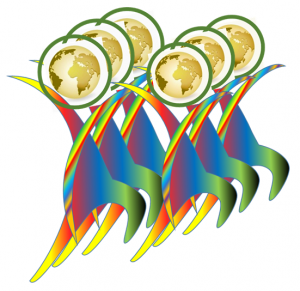

“Those who love others are the light of the world”
The CCE is a International gathering of cultural enthusiastics to celebrate as one all the diverse cultures of the world. It is not a Heritage day event, but a carnival to be enjoyed together by all in the world. All people dress in their cultural attire and come to the festival to show off their colors and origins in a no discriminant zone, but a Free park, the President’s Park.
Dedicated to all the president’s who love peace and mankind according to the teachings of the Master.
How the event or carnival will proceed, will be announced at the venue. so Come enjoy with us a unique carnival in the world, in South Africa from the 14th September to 6th October 2019.
eSwatini Cultural Info
Ncwala (Festival of the First Fruits)
This Swaziland kingship ceremony has been handed down from generation to generation for hundreds of years and is seen as one of the last remaining examples of what was previously a common practice in many African countries. Respect for total privacy is required on certain special days when the nation gathers for its own focus, without outside interference.
The festival takes place over three to four weeks; the first period commences at the new moon when the Bemanti or “water party” journeys to the Indian Ocean in Mozambique to collect the foam of waves, which is believed to have healing powers. Upon their return to the king’s palace, they hold a ceremony called “Little Ncwala”. Wearing traditional outfits, they chant sacred songs. When the moon is full, “Big Ncwala” commences with a mammoth journey by young men from all over the country, who gather branches from the “Lusekwane” tree to construct a sacred enclosure in the royal kraal (cattle enclosure). The following day a sacred black bull is driven into the king’s kraal, captured and slaughtered, ready for the next day’s feast. The next day is known as the main Ncwala day. Warriors and guests assemble in the royal compound. The warriors are typically clothed in traditional dress of animal skins and cowtails. They dance in the sacred boma, singing slow rituial songs, until at last the King moves forward into his sacred enclosure. The fifth day is dedicated to rest and meditation, to be followed by a huge bonfire on the sixth day, when articles are burned to represent the beginning of a new year.
Little Incwala
In this event, the Bemanti come to Ludzidzini, the Royal capital. The King and the Bemanti meet in the cattle byre. Special beer for them to seize has been brewed in the Queen Mother’s enclosure and in the harem (sigodlo), and they carry it out to the leaders. The regiments present wear semi-Incwala dress, the graceful cloaks of cattle-tails hang from the shoulders to the waist, flowing tails are tied to the right arms, white feathers and magnificent black plumes shine in their hair, their loin coverings are of leopard skin. The costume resembles war dress, but at the Incwala men may only carry plain sticks (imizaca, umzaca singular) instead of spears and clubs (although these are occasionally concealed behind their shields). The restriction on dangerous weapons is to guard against the possibility that fighting might break out, since excitement runs high. The veterans slowly sing the first of the sacred songs known as the ‘hand song.” The women come through the upper entrance of the cattle byre to join in the singing and dancing. The wives of the King stand in order of seniority in the front row opposite the regiments. They flaunt new shawls and newly blackened skirts (tidziya plural). Behind them is the Indlovukazi, the Queen Mother with her retainers and the co-wives of the late King. The sacred songs of the Little Incwala are followed by a number of solemn songs known as imigubho, which are rich in historical allusions and moral precepts. Imigubho are also sung at other gatherings at the capital or homesteads of chiefs. The end is marked by the singing of incaba kancofula the national anthem of the Swazi. An interim period follows for about 15 days in different royal residences and imiphakatsi around the country where incwala songs are sung.
Lusekwane
The lusekwane marks the beginning of the big incwala. This is where young men fetch the lusekwane, the sacred tree. The lusekwane is a species of acacia that grows somewhat sparsely in a few areas in Swaziland and near the coast. It grows and is fetched from the same spot (the Egundvwini royal kraal near the Bulunga Mountains) and large quantities are chopped for the ceremony. Only pure youths may fetch the lusekwane. Indeed the Swazi say the tree was made expressly to distinguish the ‘ impure’ from the ‘pure’; a distinction that is drawn between men “who have spent their strength in children or have intrigued with married women and youths who, though they have had love affairs, have not made any woman pregnant”. The sacred shrubs are used to build a sacred enclosure for the main event of the kingship. The lusekwane is cut, at night in the presence of the moon and brought back in the morning to the royal capital. After the return of the young warriors, they collect imbondvo, the leaves of a shrub that grows near the capital. The sacred enclosure (inhlambelo) is built with the lusekwane and the imbondvo at the bottom. This day is marked especially by the fighting of the bull called ‘’umdvutjulwa’’. The beast must be caught in the hands of the youths who fetched the sacred tree. Councillors drive it along with the other beasts to make it tractable, through the narrow doorway of the inhlambelo, and all the other animals come out after a few seconds. The ‘pure’ stand tense, ready to pounce as the umdvutshulwa emerges and pummel it with their strong young hands. To throw the bull with naked hands is a trial of strength and a test of purity.
Big Incwala
Following lusekwane, is the great day where the year-end is marked. Only sacred incwala songs are sung on this day. Two songs are heard at once, the lullaby song of the boys as they drive the incwambo (parts of the umdvutjulwa) into the inhlambelo and a chant of hate from the men and women. By now he is sufficiently strong to bite (luma) the most powerful of the new seasons crops and after that his people can perform their own ‘ first fruits ‘ ritual. On this day he is Silo, a nameless creature, a monster of legends. The following day is a day of kubhacisa. There is a restriction on what people can do on this day, and the King remains secluded in the sacred enclosure. The regiments cannot shake hands and celebrate manhood. The final day of incwala is a day of purification where all material no longer needed is burnt. Among these are remains of the undvutjulwa, the previous year’s gourd (luselwa), utensils and fines collected by Bemanti during kuhlamahlama. Warriors and women enter the cattle byre and sing and dance only the imigubho as all incwala songs are now closed. As the people dance they ‘ know’ that rain must fall to quench the flames. No matter how heavy the storm, the people do not seek shelter, till, drenched to the bone, they finally round off the performance with the incaba kancofula. The last day of the Incwala ends with feasting and revelry.
A last service remains to be performed for the rulers – the weeding of the fields. Early the next morning the warriors collect in the cattle byre, sing ordinary march songs, and leave for the Queen Mother’s biggest maize garden. It usually takes a couple of days to weed them, and then the regiments slowly drift back to their districts. The permanent royal battalion moves over to the King’s gardens and, having cleared them, usually works in the gardens of the queens. Throughout the country the local contingents serve their local chiefs, demonstrating in the order of their service the hierarchy of their society. And everywhere, before the people eat of their food, the conservative headmen collect the members of their homesteads and ritually partake of the crops of the new season; those chiefs who were sufficiently important not to attend the king’s Incwala have a more elaborate rite than the commoners about them.
ZAMBIA Cultural Info
When the crops ripen at the end of February, the first fruits are given to Chief Mpezeni as a sacramental meal and thanksgiving to God and the ancestors. And this is the essence of the ceremony. After the fresh fruits have been presented to the king, he takes them into his palace and prepares for the long journey from his palace in the Luangeni hill to Mutenguleni. This is a long journey: The palace is located at about 45 kilometres in Luangeni south-east of Chipata and Mutenguleni is about 60 kilometers south-west of Chipata.
Cerebration At Mutenguleni!
The celebrants are adorned in leopard skins, wielding spears, clubs, shields and eagle feathers. Speeches are given. People sing and dance. The ground literally shakes with the stomping of their feet. The ceremony climaxes when an Ngoni warrior spears a black bull to death. The bull is actually selected and killed for this occasion. Another warrior quickly slits the throat and collects the blood which Chief Mpezeni, wearing leopard skin drinks. Then, Ngonis with knives cut the carcass. Within a short period the animal is dissected and some parts are eaten right on the sport. Ngoni warriors who are known as hyenas eat some of the raw meat, intestines and organs. The whole stomping and dancing and revelry making goes on for three days, starting from Luangeni and culminating at Mutenguleni!
Umhlanga (Reed Dance ceremony) Cultural Info
Is an annual Swazi and Zulu event. In Swaziland, tens of thousands of unmarried and childless Swazi girls and women travel from the various chiefdoms to the Ludzidzini Royal Village to participate in the eight-day event. The young, unmarried girls were placed in female age-regiments; girls who had fallen pregnant outside wedlock had their families fined a cow. Umhlanga was created in the 1940s in Swaziland under the rule of Sobhuza II, and is an adaptation of the much older Umcwasho ceremony. The reed dance continues to be practised today in Swaziland. In South Africa, the reed dance was introduced in 1991 by Goodwill Zwelithini, the current King of the Zulus. The dance in South Africa takes place in Nongoma, a royal kraal of the Zulu king. Procession
Day 1 – The girls gather at the Queen Mother’s royal village. Today this is at Ludzidzini, in Sobhuza’s time it was at Lobamba. They come in groups from the 200 or so chiefdoms and are registered for security. Men, usually four, supervise them, appointed chiefs. They sleep in the huts of relatives in the village or in classrooms of nearby schools. This is a very exciting time for the maidens.
Day 2 – The girls are separated into two groups, the older (about 14 to 22 years) and the younger (about 8 to 13 years). In the afternoon, they march to the reed-beds with their supervisors. The older girls often march about 30 kilometers, while the younger girls march about ten kilometers. If the older girls are sent further, government will provide trucks for their transport.
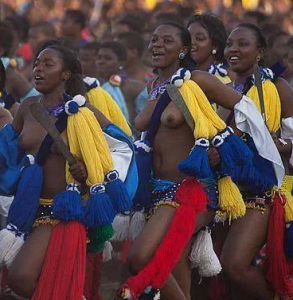
Day 3 – The girls cut their reeds, usually about ten to twenty, using long knives. Each girl ties her reeds into a bundle. Nowadays they use strips of plastic for the tying, but those mindful of tradition will still cut grass and plaint it into rope.
Day 4 – In the afternoon, the girls set off to return to the Queen Mother’s village, carrying their bundles of reeds. Again they return at night. This is done “to show they traveled a long way.”
Day 5 – A day of rest where the girls make final preparations to their hair and dancing costumes. After all that walking, who doesn’t deserve a little pampering?
Day 6 – First day of dancing, from about three to five in the afternoon. The girls drop their reeds outside the Queen Mother’s quarters. They move to the arena and dance, keeping their groups and each group singing different songs at the same time.
Day 7 – Second and last day of dancing. His Majesty the King will be present.
Day 8 – King commands that a number of cattle (perhaps 20 -25) be slaughtered for the girls. They receive pieces of meat and go home.
Umkhosi woMhlanga Cultural Info

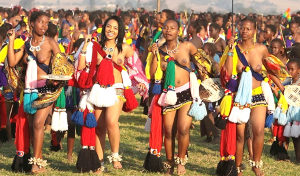
In Nongoma, KZN South Africa.
In South Africa, the ceremony is known as Umkhosi woMhlanga, and takes place every year in September at the Enyokeni Royal Palace in Nongoma, KwaZulu-Natal. All girls are required to undergo a virginity test before they are allowed to participate in a royal dance. The girls wear traditional attire, including beadwork, and izigege and izinculuba that show their bottoms. They also wear anklets, bracelets, necklaces, and colourful sashes. Each sash has appendages of a different colour, which denote whether or not the girl is betrothed. As part of the ceremony, the young women dance for their king, and each maiden carries a long reed, which is then deposited as they approach the king. The girls take care to choose only the longest and strongest reeds, and then carry them towering above their heads in a slow procession up the hill to Enyokeni Palace. The procession is led by the chief Zulu princess, who takes a prominent role throughout the festival. If the reed should break before the girl reaches that point, it is considered a sign that the girl has already been sexually active. In an eight day ceremony, girls cut reeds and present them to the queen mother and then dance. It is done in late August or early September. Only childless, unmarried girls can take part.
Tell us about your culture and send with images to admin@statehill.co.za
credits: kingdom of swaziland, wikipedea, eshowe.com, sntc,
Vietnam Cultural Info

In Vietnam, there are 54 ethnic groups, each having unique and specific styles of clothing. Traits often include splendid colors, seemingly contradicting one another in each outfit: black and red, blue and red or blue and white.
The traditional costumes of native Vietnamese nations are woven with natural fiber, such as hemp, silk or cotton. These materials are fine, stable and light, appropriate for a tropical climate. The diversity and abundance of Vietnamese ethnic clothing cannot be completely dealt with in this article; we will only introduce the traditional clothing of the Viet, the most common natives of Vietnam.
The Mid-Autumn Festival
Traditional Festivals
Every year, on the 15th day of the 8th month in lunar calendar, the children throughout the country in Vietnam are given permission by their parents to march in a procession and carry their lanterns, to eat the Mid-Autumn Festival cakes and to perform the dragon (unicorn) dance, oh, how great and uproarious they are!
This Festival is called “Mid-Autumn Festival” – or also called Children’s Festival. Do you know why we have this special festival?
Actually, this tradition of celebrating the Mid-autumn Festival began since the Duong Minh Hoang era in China, at the beginning of the 8th century (713-755).
According to ancient manuscripts, on the eve of the 15th day in the 8th month, while the Emperor Duong and his mandarins gazed at the moon, the Emperor wished that if only he could visit the Palace on the Moon. A magician named Dieu Phap Thien (also known as La Cong Vien) offered to take the Emperor to the moon by performing a number of magic tricks.
Upon arriving at the Moon Palace, the Emperor Minh Hoang was welcomed by a Fairy God who prepared a banquet and entertained the Emperor Duong. There were hundreds of beautiful fairies wearing the thin silk gaudy clothes, each of them held a long white silk piece in hand, threw it into the air, danced, and sang in the court, this dance and song is called the Nghe Thuong Vu Y (Nghe Thuong Cloth Dance).
The Emperor enjoyed this dance very much. Since the Emperor had an aptitude for music, he showed a keen interest and admiration for the dance, while at the same time trying to memorize the fairy song and dance by heart. The Emperor wanted to bring this song and dance back to the Imperial Palace for entertainment.
At the end of that year, a Governor ruling over the Tay Luong Country brought with him a group of female dancers who performed the Ba-la-mon dance.
The Emperor discovered that this Ba-la-mon dancing style shared a lot of similarities to Nghe Thuong Vu Y dance and song. He combined the two songs and dances styles into one, and called it the Nghe Thuong Dance and Cloth Style.
Later, the mandarins adopted the Nghe Thuong Dance and Cloth style from their Emperor, took this song and dance style and gradually introduced it to everyone in their far ruling countries. The tradition of gazing at the moon, and watching the dance and song later became a traditional event on eve of the Mid-Autumn celebration.
The Mid-Autumn Festival spread throughout the neighboring countries and vassal kingdoms of China. The Vietnamese Annals did not reveal from what precise time the Mid-Autumn Festival tradition was introduced in the country. They only know that, for centuries, their ancestors have followed this tradition.
Starting from the beginning of August in lunar calendar, the markets are filling of nuances of Mid-Autumn Festival. Lanterns, moon cakes, white coconut cakes are sold everywhere in the splendidly lighted shops. The streets are full of people buying and those who wander at leisure all crowding and pushing one another in these festival-like days.
Besides the assorted paper lanterns, cakes, candies, there are toy animals made of rice dough, the dragon (unicorn) heads and faces of the Earth God made of paper are displayed everywhere in the markets. In the rich families, the mid-autumn banquet is made in order to show up their nubile girls’ cooking abilities.
On the precisely 15th day of August, in the great cities, such as Hanoi, Hue, Saigon, there are the lion, dragon (unicorn) dances. This is a truly animated sight.
At the time when Vietnam was still under the French domination, the protectorate government did not want people gathering in crowds for fear of a revolt. The French government did not allow adults to organize the dragon and lion dances during the Mid-Autumn Festival, only children were allowed to participate. Since then, the Mid-Autumn Festival became the Children’s Festival. However, the adults meet their friends in small groups, sing songs, and recite poetry. ( http://www.vietnam-culture.com)
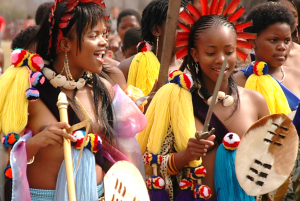

Countries will celebrate together.

